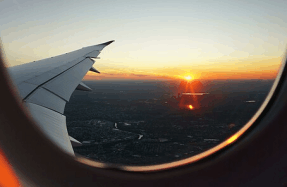How Three School Social Workers Do Their Jobs in a Pandemic
 Image: Seth Sawyers via Flickr.
Image: Seth Sawyers via Flickr. When I was teaching in Chicago, I relied heavily on my colleagues who were school social workers. If a student disclosed that they’d been abused, for example, or shared thoughts of self-harm, I would call on Faiza, Molly, Diana, Megan, or Jessica. They knew when to make a referral, when to call a parent, and when to do neither. They were warm and inviting without being intrusive or cloying. They were cool in a crisis. I’m pretty sure they all had resting heart rates of about 42.
Their involvement meant peace of mind. By providing a safe space for kids to talk with an expert, the social workers relieved pressure on teachers like me. But it was more than that. Because each time they helped one of my students, they would check on me, too. We would follow up a long conversation with a potentially suicidal sophomore and his mom with a just-as-long conversation about how the first conversation had gone. They made sure I got to talk. And by doing so, they helped me learn how to process the secondary trauma that is an inherent part of teaching and other first-responder professions.
Over the last three months, I’ve checked in three times with three different school social workers at three different kinds of schools: public, public charter, and private. I wanted to know what the coronavirus crisis meant for each of them, and the students they served. Despite the differences between their schools, the social workers themselves have things in common: all three, for example, are white women under the age of 32 who work in the Midwest. (One, Megan Murray, is the same Megan mentioned above—which is to say, a former colleague, now finishing her final year at the high school where I once taught.) Their experiences are just that, and are not meant to represent their profession. I created the following “as told to” dispatches based on notes I took during our interviews.
These social workers’ already-difficult jobs have been made much harder by the shutdown. But each has carried on, with creativity and perseverance, doing what they can to keep helping kids and teachers.
MARCH 17, 2020
Sam Dunne, 31
Elementary School Social Worker
Anne M. Jeans Elementary School (Public)
Willowbrook, Illinois
Students are 66 percent black, 17 percent white, rest other; 80 percent low-income.
Last Friday afternoon, I was working with staff and students to pack meal bags to send home in case we shut down: apple sauce, fruit cups, cereal, sunflower butter and jelly. We were packing about 500 bags, each with five breakfasts and five lunches. We found out midway through our packing that the school was closing that afternoon, so
You’re reading a preview, subscribe to read more.
Start your free 30 days





